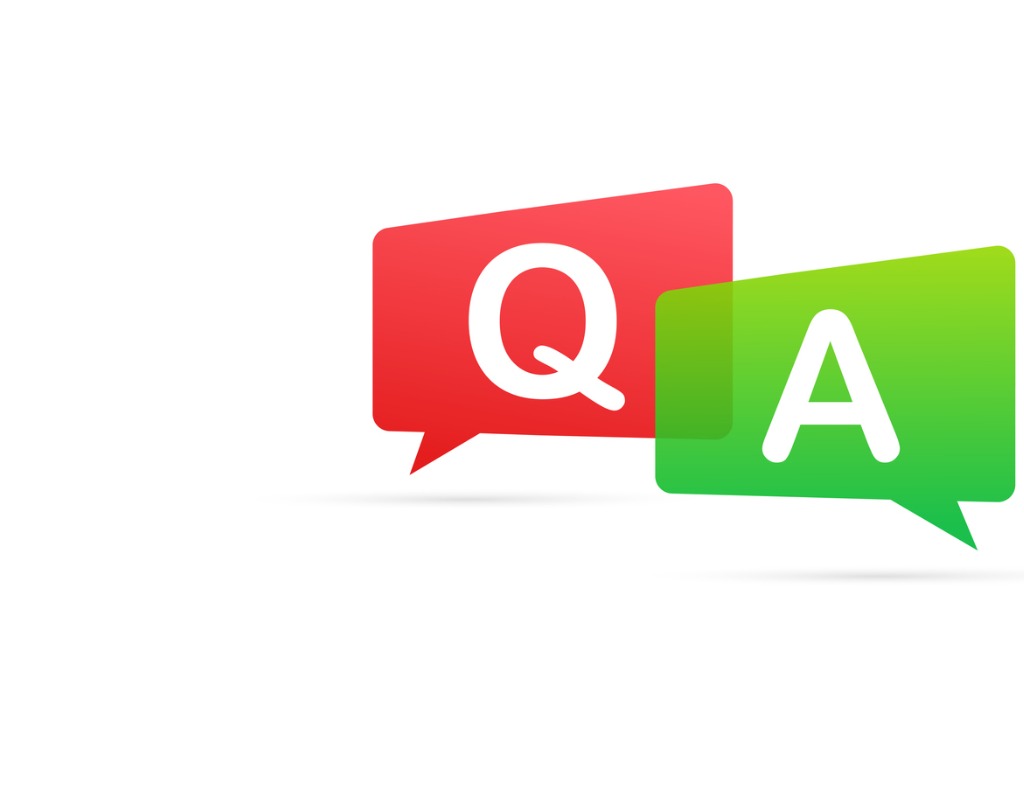For many years, SMI used to run a "Q&A" column in the newsletter every month where we would answer reader questions. We haven’t done that in recent years, as the ability to interact in the comments on every article online has largely eliminated the need to maintain a formal/regular space for that. But with so much going on in the investment world lately — including a lot of attention being focused on challenging topics like yield curve inversions, negative interest rates, and so forth — I thought it might be interesting to "open the mic" and formally invite reader questions.
I’ll start with a couple of example questions and answers to get the conversation rolling, but then I’m hoping SMI readers will post their questions (or follow-up questions) in the comments below. I’ll keep circling back for a while to answer them. Hopefully, it will be a fun way to address the topics on your minds! No need to confine the questions to any particular investing or financial topic either. (Although if anyone asks about the Dodgers, you could be in for an earful.)
Question: Why are so many financial people seemingly brushing off the recent yield-curve inversion when it seems like it has had a pretty solid track record of predicting past recessions?
Answer: Two reasons. First, this always happens when the yield curve inverts. There are always factors specific to the current situation that make it seem different this time, so there are always experts making that case. Most economists who follow this sort of thing have a "fundamentals" view of the economy — a sort of ground-up way that they measure the health of the economy. Unfortunately, that type of view almost always misses upcoming recessions because the reality is that economic conditions usually look pretty decent until pretty close to when the recession begins. Plus when you get paid for a living to interpret all the economic signals and supposedly make sense of it all, it’s a bad look to just throw your hands up and admit defeat when a mechanical indicator like the inverted yield curve triggers. So this combination of factors explains why there are always plenty of experts ready to explain why the inverted curve is wrong this time.
Second and more specifically though, the big "it’s different this time" factor has to do with international interest rates. An unbelievable ~$13 Trillion of global debt currently carries a negative interest rate right now. That’s roughly 25% of the entire global investment-grade bond market. This is unprecedented in world history — we are literally living through a monetary experiment that has never been tried before.
The reason this is so significant is bond yields "compete" with each other. So all those countries with negative-yielding debt (which basically include all of Europe and Japan) are in some respects competing with U.S. interest rates for investors. Now there are a lot of "captive" investors that aren’t going to invest globally no matter what the circumstances. The central banks of both the EU and Japan have been huge buyers of debt in those respective regions — they aren’t going to stop buying their own country/region’s debt based on interest rates, when driving those rates to current levels is, in fact, the point of their buying in the first place.
But individual investors and some institutional investors are absolutely going to look at a German or Japanese bond with a negative interest rate and decide to opt for a U.S. Treasury with a positive yield instead. One analysis I read recently suggested that roughly half of the decline in U.S. Treasury yields so far in 2019 can be attributed to this "international shopping" factor, as opposed to a perception that the U.S. economy is weakening.
So one argument against the yield-curve inversion being significant this time around is that these negative yields, which are largely a political phenomenon brought about by never-before tried central bank policies, are pulling longer-term U.S. yields significantly lower than they would otherwise be. If that’s true and the 10-year Treasury should be half a percent higher than it is currently (which is the amount that recent study attributed to this effect), neither the 3-month/10-year nor the 2-year/10-year yield curves would be inverted at this point.
Unfortunately, there’s no way to prove whether this is true or not. So we try not to overemphasize a single factor like this, while at the same time helping SMI members understand how events like these are revealing a gradually increasing risk level in the markets overall.
Question: How are negative interest rates not insane? Who is lending (buying these bonds) that carry negative rates and paying for the privilege of holding them?
Answer: I alluded to the idea in the last response that I don’t think there are likely a lot of individual investors investing in negative-yielding debt, at least directly. With U.S. Treasuries still offering a positive-yielding alternative, it’s hard to imagine why they would. (That said, I’ve seen zero data on this, so I’m speculating.)
However, there are lots of institutional investors that have to park huge amounts of capital in "safe" investments. Think big insurers, pension funds, and other financial institutions. For example, if you’re a huge European pension fund or insurance firm with a need to park $100 billion in something safe (especially if you’re limited by your charter to certain geographical constraints), you’re probably going to accept a small negative interest rate just to be able to keep the money safe and liquid. There are lots of variations on this theme, which when coupled with the massive purchases of this type of debt by the ECB and Bank of Japan, explain who is holding a lot of this negative-yielding debt.
Where things get really interesting (crazy?) is how more and more stories are coming out about these negative rates trickling down to the consumer level. Here are a couple of recent examples. A couple of Swiss banks have started charging a negative rate on bank deposits above certain thresholds (500k euros and 1 million euros), which means their wealthiest clients are now feeling the pinch of negative rates. I saw another story just today where an investment manager was making the case that the ECB’s quantitative easing policies won’t be fully effective until banks are forced to pass these negative rates through to customers. (My opinion: this is called a trial balloon, being floated to introduce an idea and gauge the reaction, preparing the way for the next stage of the QE progression.) And last week a Danish bank started offering mortgages with a -0.5% interest rate, meaning borrowers will end up paying back a bit less then they borrow over the course of the loan.
Katy, bar the door, it’s getting weird out there!
Okay, now it’s your turn! Post your question in the space below and let’s get the conversation started.









